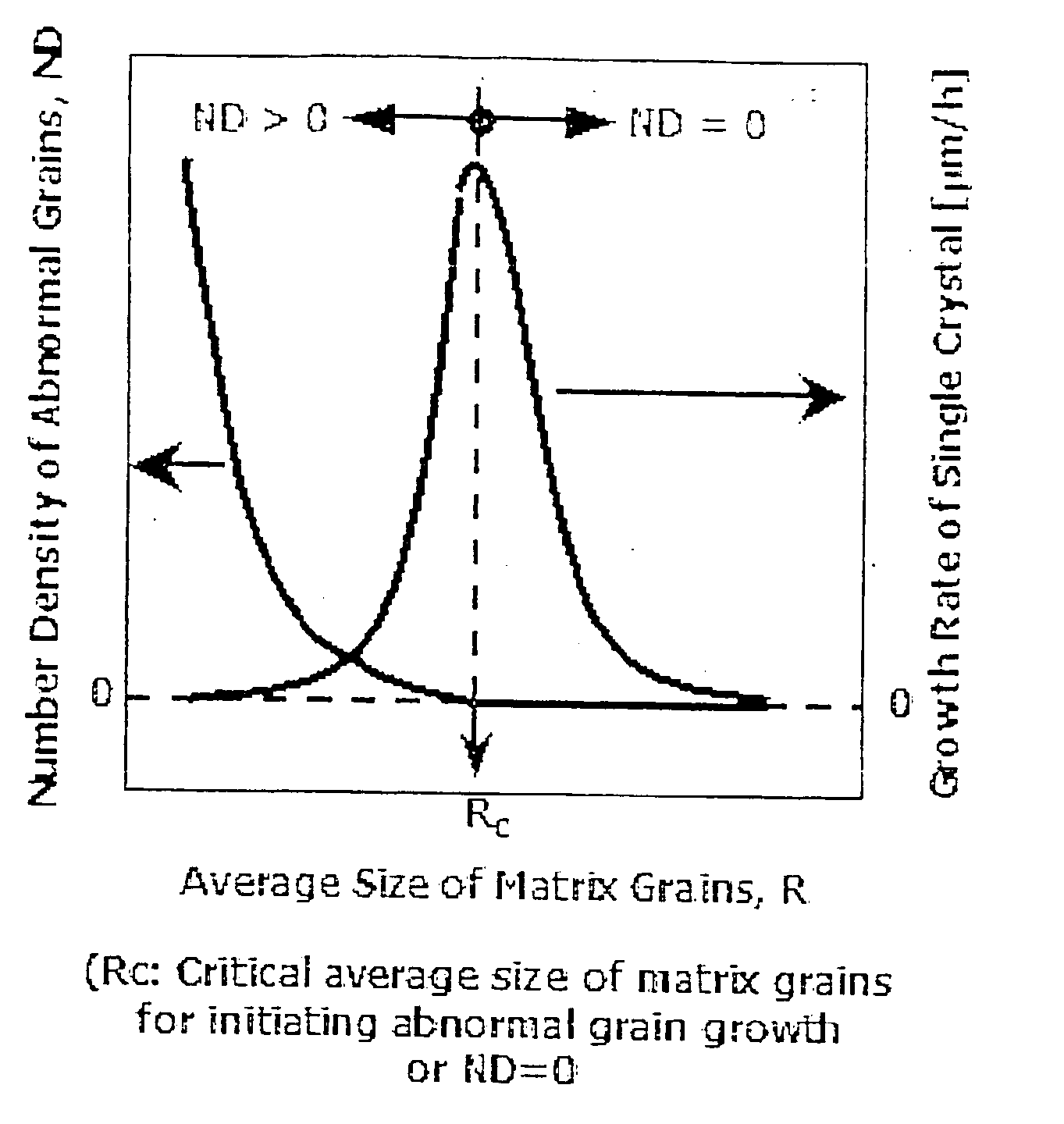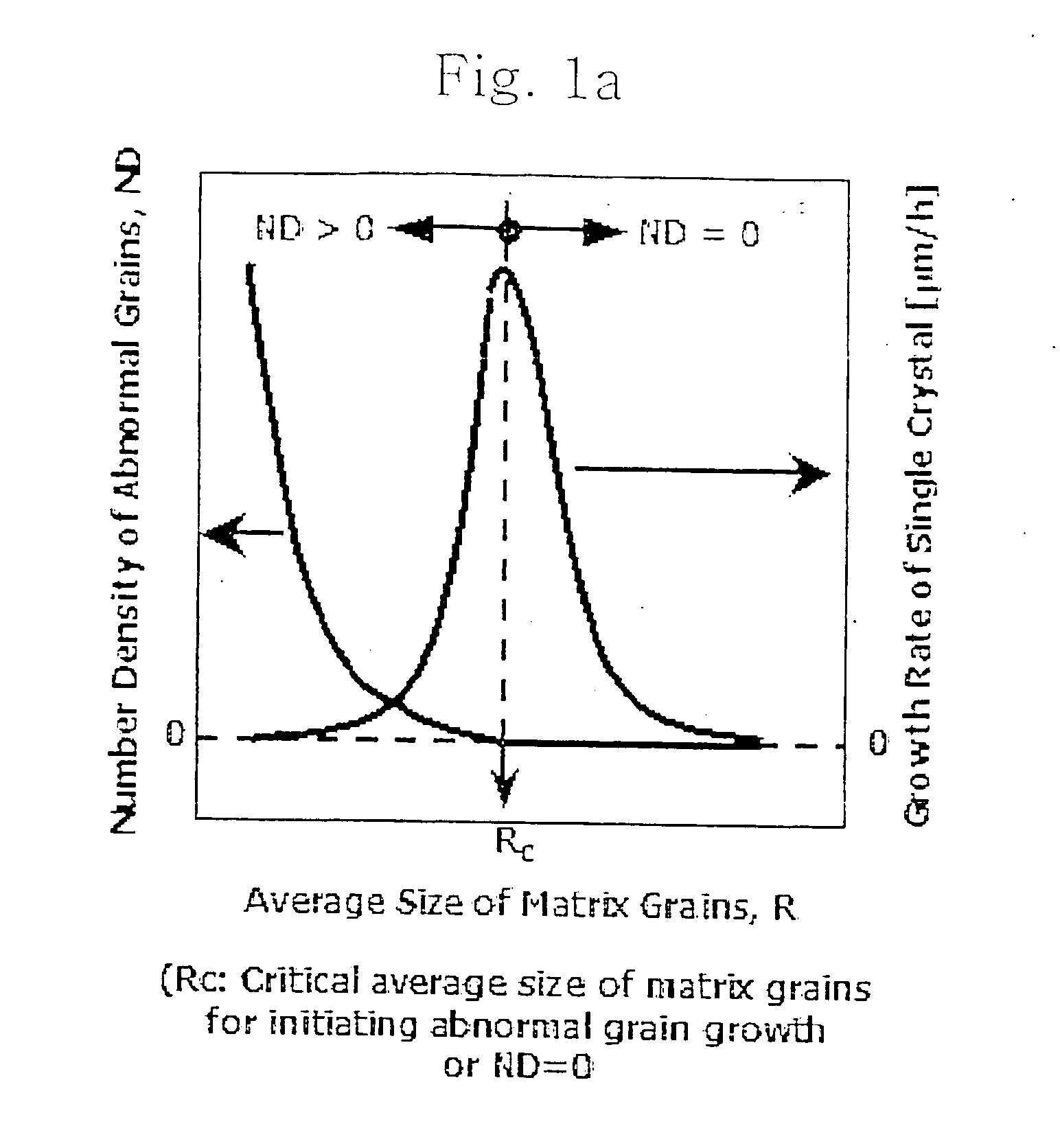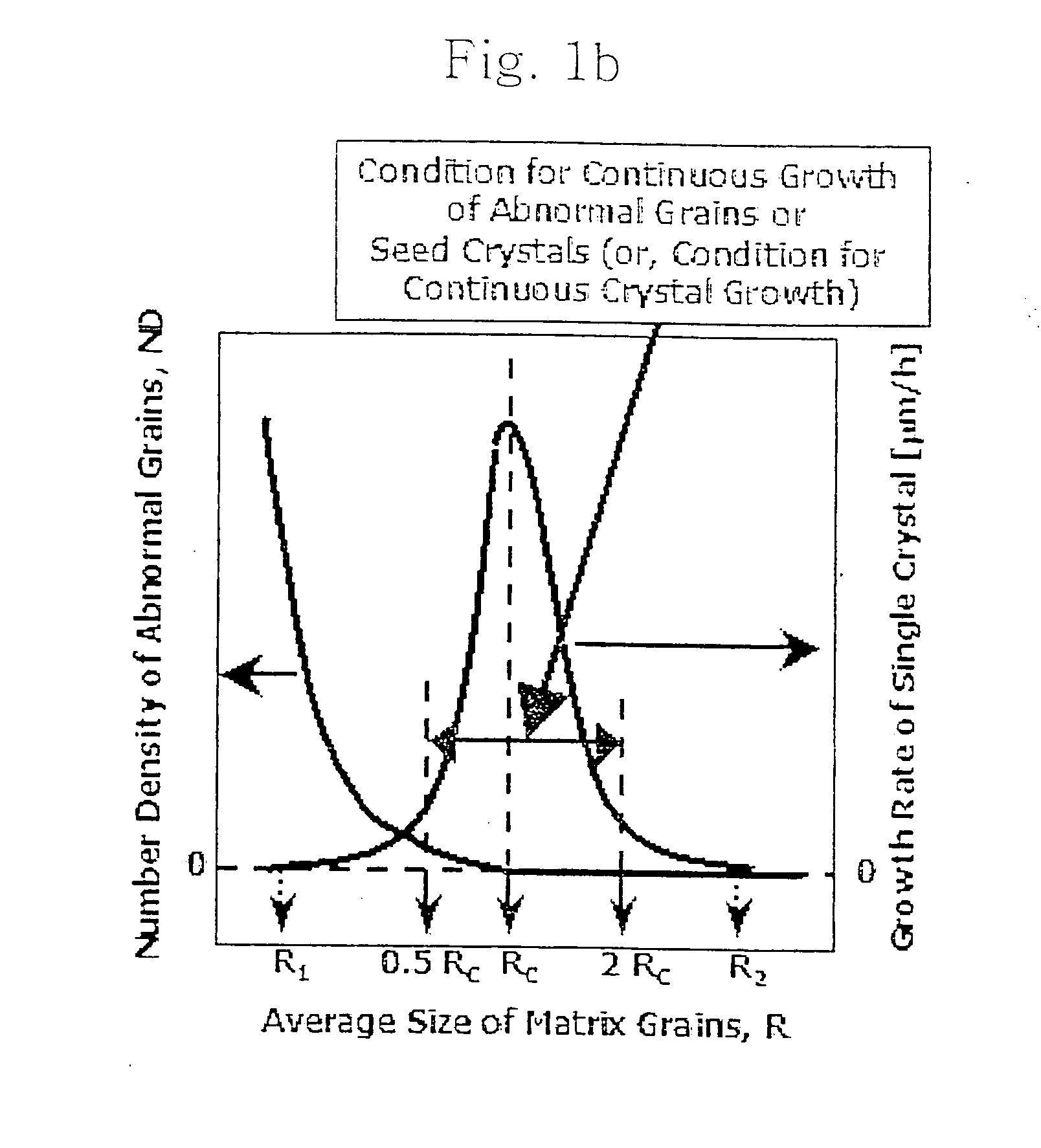Method for solid-state single crystal growth
a single crystal, solid-state technology, applied in the direction of single crystal growth, polycrystalline material growth, liquid-phase epitaxial layer growth, etc., can solve the problems of complex and difficult control, abnormal grains are rapidly grown, and abnormal grains are abnormally large, so as to effectively control abnormal grain growth, reduce the cost of production, and reduce the effect of exogenous or discontinuous grain growth
- Summary
- Abstract
- Description
- Claims
- Application Information
AI Technical Summary
Benefits of technology
Problems solved by technology
Method used
Image
Examples
example 1
[0062] Ba(Ti,Zr)O3 has excellent dielectric, piezoelectric and electro-optical properties and is used as a core material of the various kinds of electronic parts. In this Example, Ba(Ti,Zr)O3 was used as the polycrystalline body, and Ba(Ti,Zr)O3 having one or more components higher or lower than those of the original composition thereof was subject to heat treatment, thereby causing the average size of matrix grains and the number density of abnormal grains to be controlled. Ba(Ti,Zr)O3 powders were prepared by mixing BaCO3, TiO2 and ZrO2 powders and then calcining the mixture at 1200° C. in the air. The powders having various compositions comprising excess TiO2 were prepared by adding excess TiO2 to the prepared Ba(Ti,Zr)O3 powder in the amount of 0.1 mol % to 1.0 mol %. Then, the powders comprising added TiO2 were molded in a quadrangle mold and the molded powders were subject to cold isostatic pressing at the pressure of 200 MPa. The powder-molded bodies were subject to heat-trea...
example 2
[0066] The average size of matrix grains of polycrystalline body is changed depending on the heat treatment atmosphere (e.g., air, oxygen, hydrogen, oxygen partial pressure, degree of vacuum). Based on this theory, in this example, the average size of matrix grains of the polycrystalline body was controlled by primarily heat-treating only the polycrystalline body in the atmosphere different from the atmosphere for a single crystal growth prior to the secondary heat treatment for the single crystal growth. When the average size of matrix grains of the polycrystalline body prepared in the primary heat treatment is controlled to be within the range of 0.5 Rc≦R≦2 Rc under the condition of a secondary heat treatment, it is possible to continuously grow only the seed single crystal or a limited number of abnormal grains generated in the primary heat treatment during the secondary heat treatment. The production and the atmosphere of powder used in this example were same as those of the Exa...
example 3
[0069] The abnormal grain growth in the polycrystalline body can always occur if the average size of matrix grains is smaller than the critical size of matrix grains for abnormal grain growth. When the abnormal grain growth occurs, abnormal grains grow while consuming the matrix grains. When the abnormal grains have completely consumed all the matrix grains, the abnormal grain growth is completed. After the completion of the abnormal grain growth, the abnormal grain growth can again occur if the size of the abnormal grains is not so sufficiently large that the size is smaller than the critical size (Rc in FIG. 1) of matrix grains for abnormal grain growth. In this case, the early-generated abnormal grain growth is referred to as a primary abnormal grain growth, and the later generated abnormal grain growth is referred to as a secondary abnormal grain growth. Like this, the abnormal grain growth can repeatedly occur, and when the abnomial grain growth occurs and then has been complet...
PUM
| Property | Measurement | Unit |
|---|---|---|
| size | aaaaa | aaaaa |
| pressure | aaaaa | aaaaa |
| size | aaaaa | aaaaa |
Abstract
Description
Claims
Application Information
 Login to View More
Login to View More - R&D
- Intellectual Property
- Life Sciences
- Materials
- Tech Scout
- Unparalleled Data Quality
- Higher Quality Content
- 60% Fewer Hallucinations
Browse by: Latest US Patents, China's latest patents, Technical Efficacy Thesaurus, Application Domain, Technology Topic, Popular Technical Reports.
© 2025 PatSnap. All rights reserved.Legal|Privacy policy|Modern Slavery Act Transparency Statement|Sitemap|About US| Contact US: help@patsnap.com



